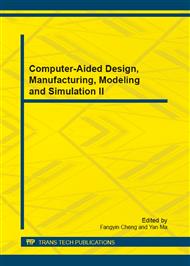[1]
Gerhard Greving: The Electromagnetic Scattering within System Simulations for Distortions of Navigation Landing and Radar Systems. NAVCOM Consult, Ziegelstr. 43, D-71672 Marbach/Germany.
Google Scholar
[2]
Sun LiXin, Chen Yaqing, Liu Guoyi: Error Analysis of ADS-B Surveillance System in ATC. Journal of Wuhan University of Technology Transportation Science & Engineering. Vol 35. No. 4. (Aug. 2011), pp.799-801.
Google Scholar
[3]
Wang Youyue: The Way and Idea to Improve the ILS Structure of Glide Path. Journal of civil aviation university of China. Vol. 23 NO. 6 (2005), pp.5-9.
Google Scholar
[4]
Sun Yawei, Huang Jiacheng, Cao Naisen: Standard signal source design for VHF omnidirectional beacon / Instrument landing system, ELECTRONIC MEASUREMENT TECHNOLOGY, Vol 31 No. 7( 2008. 03), pp.59-66.
Google Scholar
[5]
DAI Chuanjin , WU Dewei , ZHAO Xiubin, XU Jin: Modeling and simulation of electromagnetic environment for aircraft approaching system. ELECTRONICS OPTICS &CONTROL, Vol. 15 №. 1(Jan. 2008), pp.42-46.
Google Scholar
[6]
Teggatz A, Joestingmeier A, Meyer T, et al: Simulation of a ground penetrating radar environment by means of FDTD methods using an automatic control approach. Antennas and Propagation Society International Symposium on IEEE: 2004. USA: IEEE, 2004: 2095-(2098).
DOI: 10.1109/aps.2004.1330622
Google Scholar
[7]
Yaoming Yang, Xiaoan Tang, Hong Chen and Huan Li: Study on Visualization Simulation of Complex Electromagnetic Environment for Tactics Application, Proceedings of the2008 IEEE International Conference on Information and Automation, Zhangjiajie, China, (June20-23, 2008)pp.1823-1827.
DOI: 10.1109/icinfa.2008.4608303
Google Scholar
[8]
WU Ying-nian, ZHANG Lin, ZHANG Li-fang, ZHANG Wei-cun: Survey on Electromagnetic Environment Simulation and Visualization. Journal of System Simulation. Vol. 21 No. 20 (Oct, 2009), pp.6333-6338.
Google Scholar


